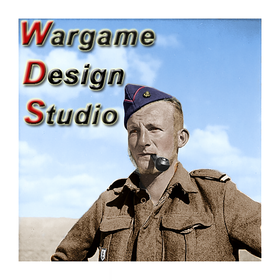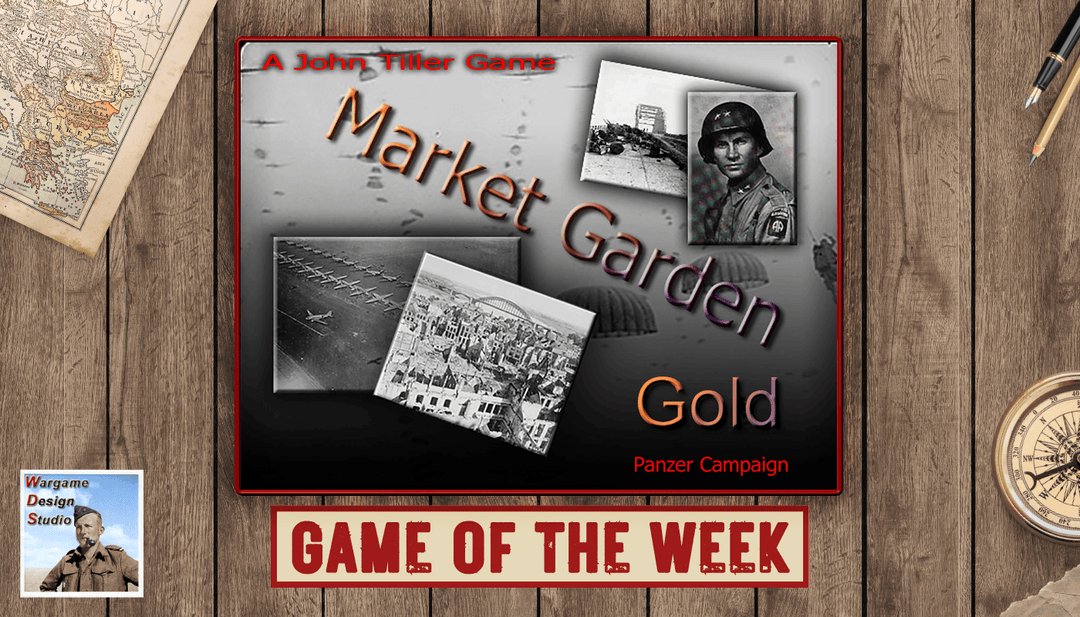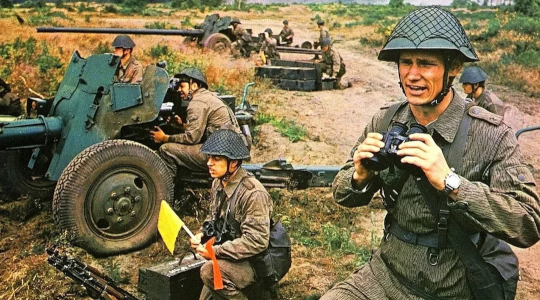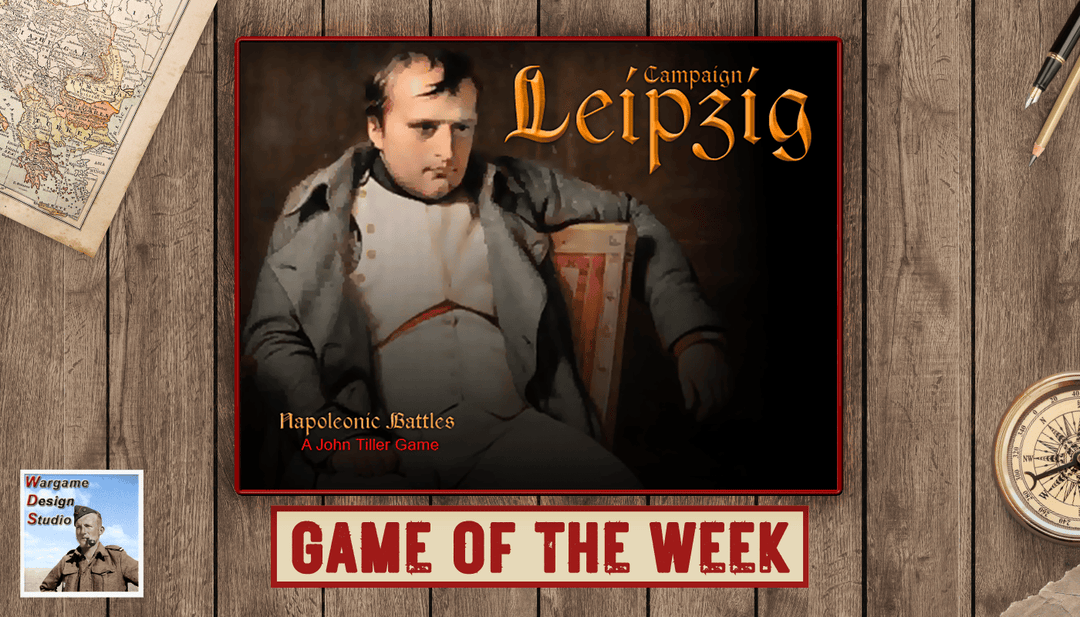Push of Pike - Digital
Today we are bringing you a bit different blog post than most we publish here. Our guest writer is a long time wargamer covering several different mediums and has even published his own miniatures rule set, Age of Eagles, and has a website with a variety of wargaming goodies you might be interested in. You can check that out here - https://ageofeagles.com/. Bill wrote articles for Wargamer.com back when they, well, covered wargames. And today he writes a bit about one of our titles, Musket & Pike: Thirty Years War, compares it to another game on the market and talks a bit about how he uses it. I (Rich) will include a note here or there in this post, and then a bit more content at the bottom of the article to elaborate on a few points. So, without further delay, let's jump in.
(All images can be clicked for full-sized viewing.)
PUSH OF PIKE DIGITAL
Thoughts on WDS Thirty Years War and its most loyal opposition . . .
By Colonel Bill Gray, US Army (Retired)
So, Rich Hamilton and I were emailing each other a few weeks ago . . .
OK, a little bit of transparency here. I am principally a pewter pusher, aka historical miniatures wargamer. And one of my favorite periods is the Pike & Shot era, not only for its fascinating aspects of warfare, but for the colorful pageantry as well. But this means space, lots of toys ($$$), time and most of all, multiple players to do it right. This is often a non-starter for me, so when I need my Pike & Shot tactical fix, I turn to board and computer games. The former, such as Ben Hull’s fine GMT games, is not an optimal solution as it also needs space for setup and simply caves under Elector Maximillian von Wittelsbach’s (or Max, the Resident Feline Overlord I live with) hit and run asymmetrical warfare philosophy.
This leaves two computer games, both with solid miniature roots. The first is Matrix Games Pike & Shot Campaigns (or PSC for this article), a direct port of the miniature Field of Glory Renaissance rules by Richard Bodley Scott, who also designed the digital version. The other is WDS Thirty Years War (or TYW), with a pedigree that includes the first monster cardboard counter game, 1975’s La Bataille de la Moscowa by Marshal Enterprises, that freely admits inspiration from miniature rules like Scott Bowden’s EMPIRE.
I have both and I play both, so with that in mind I thought I’d review the new WDS game by way of a comparison with its most loyal competition, PSC. Bottom line up front – which is the better PC game? Both. It really depends on what the player likes as regards commanding units and decision making. Do you like more traditional gameplay where you assume all levels of command from army commander down to battalion colonel commanding? Do you like to manually change formations of individual units such as extending the line or detaching skirmishers? Do you need the ability to turn certain game functions on or off? Then TYW is the game for you as it is hyper-detailed and includes all the granularity and digital functionality for you to do exactly that.
Above: TYW French center formations at the battle of Rocroi - 16 May, 1643
However, go with PSC if you want to concentrate on being an army commander and let the game’s AI handle more low-level tactical or various gameplay functions for you. In PSC, reachable tiles are automatically displayed and cannot be turned off. As a unit moves, small popups appear providing ongoing movement options. Foot and Horse do not have multiple formations in PSC, so there is nothing for a player to change. Instead, prevalent unit formations for the era are assumed, while AI auto-fire deals with defensive and opportunity targets. Get the engraving, er, picture?
Above: same battle & similar forces, but from PSC.
TYW uses hexes with a scale of 100 meters per hex and 15 minutes of real time for each turn, with units the general equivalent of battalions. On the other hand, PSC uses tiles and has no specific ground or time scale, nor unit size. It all depends on the scenario being played. This is a more British wargaming philosophy and this in turn means PSC is exceptionally imprecise. TYW is the exact opposite. All historical commanders are present, identified by name, as are all the units thereof. Think Colonel Munro’s Regiment of the Scots Brigade, Brigadier Leslie commanding. This same unit appears decked out in its historical war duds, proudly carrying its St Andrews Cross flag. PSC uses generic names and categories (e.g., Veteran Pike and Shot), with uniforms and flags also generic. Given its miniature rules background, this was a surprise, one that needs fixing IMHO.
Above: Scot forces under Munro, from TYW. Top is the Unit Info Boxes, bottom is the 3D Zoomed In view.
There is little to say about the different types of battle map presentation. TYW is more hex, board game based, PSC designed deliberately to look like the tabletop of a miniature wargame. In TYW, the 3D map graphics I tend towards are of the newer style, with softer, smoother ground and miniature like villages and forests. However, for whatever reason the game does not drop the hexside elevation contours for the more painted, tabletop design found in games like Campaign Franklin. One thing I do like about TYW, however, is that it often provides a map of the surrounding area of a battle, and not simply the battlefield itself. This offers the ability to replay a scenario at a different location, often several kilometers away from the actual, historical battle site.
(RH Note: the "painted" maps he refers to are the add-on maps available for some WDS titles. We chose not to include them as they are static - i.e. more difficult to update with future changes, "space hogs", consuming a fair bit of hard drive space - and can be limited by size and what the system can handle. Really large maps could not have that style.)
Above: Zoomed Out view of PCS: Nordlingen
Above: The 1st Battle of Nordlingen from TYW. The insert section on the right is the Jump Map which displays the entire scenario map. The section in the red rectangle is the amount of the map currently displayed in the game screen.
I suppose you could use the Scenario Editor in PSC to fix this, but that takes time and patience, of which I have little of either. Here I prefer the TYW type of Scenario Editor precisely because it is a little less powerful. So far as I can tell, the editor is made to function primarily with existing premade scenarios and their unit roster. So, while you might be able to adjust the map, order of battle, unit values and other parameters of, say, the battle of Rocroi, making a new battle from scratch might be difficult. Consider, for example, that TYW does not have a map editor or generator, although using any text editor will allow you to pull out a portion of an historical scenario map to modify. Simple, but that suits me fine.
(RH Note: some clarifications here. The scenario editor in TYW can be used not only to edit existing scenarios, but also create completely new scenarios using the provided maps, OOBs and PDT files that ship with the game. New OOB and PDT files can be created, from scratch, with the use of a plain text editor. Details on those files are included inside the Scenario Editor Manual that ships with the game. At the bottom of this post I'll include further details on sub-mapping as well.)
Above: The TYW Scenario Editor with the 1st Breitenfeld battlefield open.
However, when you talk Campaign Systems, here TYW has a significant edge, hands down. If you like dealing with area movement, collecting taxes, politics, trade negotiations (on top of an occasional battle), then you need to look at one of the fine games by AGEOD. PSC’s mini-campaign is similar in this regard, but TYW drops all such nonsense to concentrate getting the player into pitched battle to smite the heretics on the other side. This is done using a decision tree system which gives the player the current historical situation, then asks him to make a choice between two alternatives. Do I assault Bamberg, or do I withdraw from Bamberg? Based on his choice, cross-indexed with the choice made by the AI or opposing player, and the results of a battle scenario played, if any, he will be presented with yet another set of options to choose from, and so on until the campaign ends. This seems to be a WDS product line philosophy in a way, and I like it. I only wish more than two campaigns were included in the TYW package.
(RH Note: Further comments on campaigns at the bottom.)
Above: A composite image with the campaign editor open to show the various elements of the campaign, and then user interface screens to show how information is displayed to the player prior to reaching the tactile battle.
Another feature in TYW I really, REALLY like, one that I have seen nowhere else, is the Command Control AI system. I’m fiddling with this right now playing Rocroi, but the way it seems to work is the computer AI controls a human player’s forces EXCEPT for leaders and their units chosen for Command Control management. These are under the player’s control, but not directly. Instead, he assigns a hex as a specific geographic objective to a leader and directs him to use his pike toting mob to execute one of five orders vis-à-vis the objective. They are:
- Extreme Defend – its 300 Spartans time.
- Defend – defend objective but will retreat to a safer location if certain casualty/morale levels are met.
- Nothing – at current location/objective you are in reserve, fall out, grab some chow, smoke em’ if you got ‘em.
- Attack – attack and secure objective but break off attack if certain casualty /morale levels met.
- Extreme Attack – Leroy Jenkins, “I got this.”
The player can intervene directly, change orders and so on, but I love the way this concept could easily mimic history, especially when your commanders seemingly disobey or somehow manage to dork up their orders. After the obligatory, jaw dropping look of shock, it’s time to directly intervene . . . just like Gustavus Adolphus given few of his aristocratic commanders knew how to read. For me, best feature of the game.
Above: Command Control module in use with the Rocroi scenario in TYW.
Now, I do kinda like the overall unit graphics presentation in PSC better as opposed to TYW. What Bodley Scott did was to group battalions into their historical battlefield brigades, then visually present that result using the style of 17th Century artists, like the 1631 engraving of Breitenfeld by Matthaus Merian the Elder. This looks like my pewter games where I imagine flying a drone over the actual battle when it historically happened. Which is why when I host a pewter game, I forbid markers and labels on the table to the greatest extent possible.
Above: Battle of Breitenfeld Engraving
Above: PSC formations.
Above: TYW Formations.
Here I play a set of mini rules published by the UK Pike & Shot Society called Twilight of the Sun King (or TWIGLET as it’s affectionately known). The game, like PSC (again think Swedish Salvo Brigades with pikes center, shot on the flanks, 97+ computer soldiers therein), looks like those old engravings which looks like reality IMHO. Sold.
Above: TWIGLET Game at HMGS Historicon, Authors Figures
But all of the above is pure personal preference, nothing more. Both games do a great job supporting their constituencies and both do an excellent job covering the level of command they portray. The miniaturist in me ever so slightly leans towards PSC because of the graphics, but to be honest, I tend to use that game for larger battles, while I use TYW for smaller engagements. Because let’s face it, if you’re playing battles of the size found in the English Civil War, that’s an environment where the overall commander might very well be down at the demi-culverin to tell the Master Gunner how to do his job. Regardless, I’ve not been disappointed with either game.
And trust me, you best believe I am eagerly awaiting the next game in the WDS Musket and Pike series, and you best believe it damn well better have “Sun King” somewhere in the title. If not, I am cranking up my (hopefully repaired) TARDIS, returning with Gustavus, Tilly and more than a few doughty lads for a serious, frosty discussion with Rich Hamilton and the rest of the WDS staff.
It won’t be pretty.
Above: The 1620 White Mountain scenario from TYW.
Thank you Bill, and no worries, we are far from done with our Musket & Pike series of games. Many, many titles in the pipeline...
A few closing comments that I thought were better left to the end of the article. First off is Maps. While it is true we do not offer a full map editor with the game that allows you to create maps completely from scratch, we do offer an ample load of maps with the game (64 to be exact, ranging in size from 960 hexes up to 330,000 hexes) . These allow you to create variations of historical battles, working in what-if situations that might have caused the battle to be fought elsewhere. Or, to create hypothetical actions in areas not covered by the historical actions. One tool that is included with the game to facilitate this is the Sub Map Editor. This tool allows you to chop up an existing map to make a smaller scenario map - possibly removing a key city or terrain feature to give you a more unique battlefield.
You select the master map you wish to pull from, then you left-click where you want the top left-hand corner of the map to be. You then scroll over and click when you want the bottom right-hand corner to be - you then choose "Save As...", give the file a name - and you have a new map to build a scenario with.
Above: TYW Sub Map Editor.
And then Bill mentioned the game only having two campaigns. The reason that only two were included is these two years - 1622 & 1632 - were the only two spans of the period that really had a sizeable collection of battles that were close enough together in time, which would enable losses to carry over between them. And based on player feedback these are the most popular style to include, which is why we focused on them. We did a blog post discussing the various types of campaigns in the pre-twentieth century games which you can read here. Most of the fighting that took place in the Thirty Years War was very spread out, with long periods of rest and reorganization in between. Also, the same combatants might not participate in sequential battles, rather one army may fight multiple different armies in a campaign season. It was, after all, spread out over 30 years...
There is potential for another campaign, possibly to be included in a future expansion package, as the scope of the game is broadened a bit. But that remains to be seen.
Ok, that brings us to the end of our post. You can head on over to the Thirty Years War product page and pick up a copy if this has piqued your interest. With 80 stand-alone scenarios & two campaigns there is a whole lot of gaming enjoyment to be had!
Not ready to make a purchase yet? Well, you can try the Free Demo for the Musket & Pike series - Vienna 1683 - which will give you a good idea of how the mechanics of the system work.





















He sums it all up very well. If you are a micromanager than the TYW series is for you. If you prefer to direct armies and not worry as much about the details of the units then Pike & Shot is for you. I have played both series and as I got older I got tired of all of the detail so I prefer the P&S series. The huge advantage with the WDS product lies in the ability to play a campaign and the author pointed that out very well.
I wrote just such a comparison a long time ago for PSC and Renaissance.
My conclusion was also similar; WDS delivered a more historical game with actual units and leaders from the time. PSC however I feel often presents a good anonymous game vs the AI as the combat system is cleaner and the AI is much more capable.
They both have their own specialities. It’s like whether you go for Empire Total War or the WDS Napoleon games. They both do something similar but also very different.
DENNIS,
That’s the sorta thing you need to ask a pewter pusher, because such minutia is kinda our thing. *
BOTTOM LINE – Fast Trot. BP von Chemnitz in VOL I of his 1648 book Koniglichen Swedischen in Teutschland gefuhrten Kriegs spscifically recorded that Gustavus dropped the full armor set in favor of helmet/breast and back plate, reduced the number of ranks to three and changed their current Caracole tactics to what we in the miniature community call “Pistolier” horse. Pistolier horse charged at a fast trot for cohesion and then at close range the first (or first two ranks at most) would discharge their pistols in a volley, drop the weapons, grab the sabre dangling from their wrists and drive home into contact. The third rank was a reserve with sabres drawn, but both pistols holstered for use in the subsequent melee. This stunt could only be managed and executed properly at no more than a fast trot. That was the theory, but mercenary units were known to fall back into Caracole given they did not want to endanger their expensive horses or promising careers.
The breakneck, boot to boot, full gallop charge with sabres only that made the Swedes famous was more a development from the age of Charles XII.
Hope this helps, Colonel Bill
Seriously, guys who play Warhammer 40K will spend days arguing over the ballistic characteristics of the fictional Stormbolter assault rifle. Ridiculous I know, totally contrary to really important stuff like the color, by regiment, of Russian flag staffs.Great review. I especially like the reference to other games. I have all the computer games. AGEOD’s game on the thirty years war is an overlooked gem. Pike and Shot is great for simulating battles that have never been simulated before. TYW’s command and control leaders option makes large battles a breeze to play and well simulates the difficulty of coordinating units in a large fight,
Phantastic read. This is by far my most favourite time period.
Leave a comment